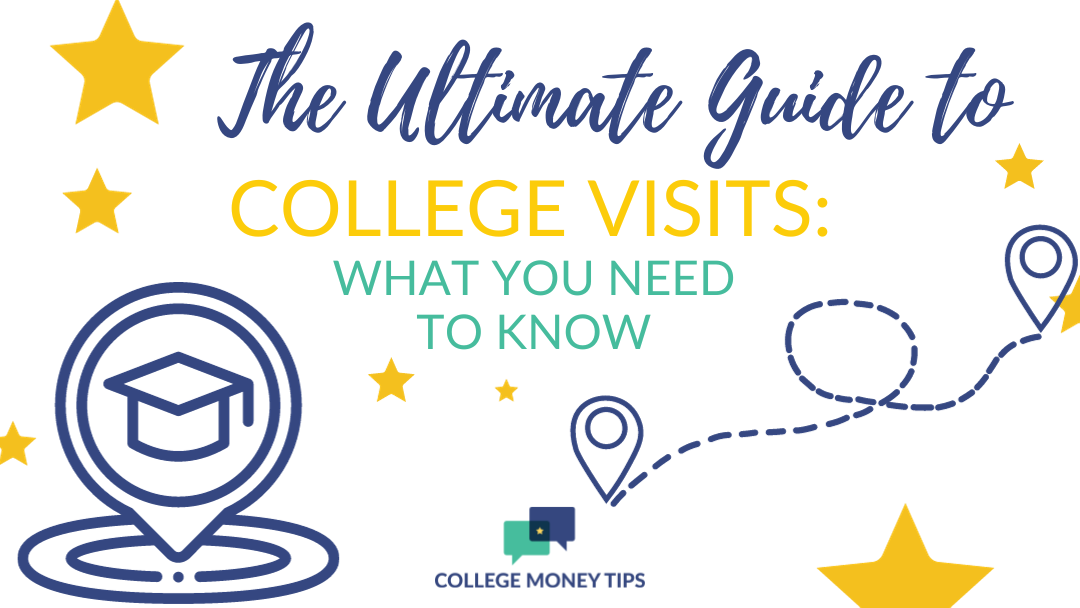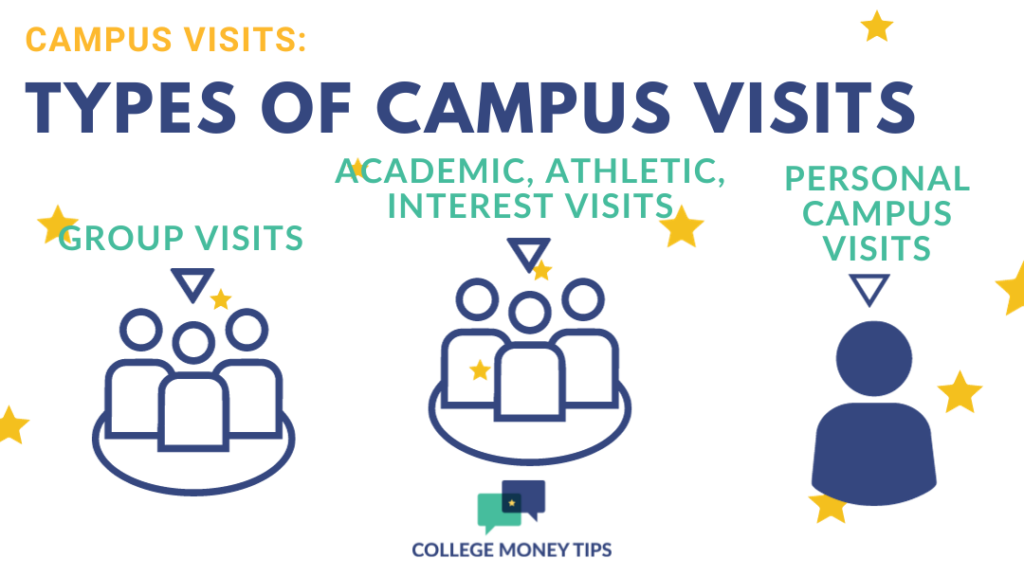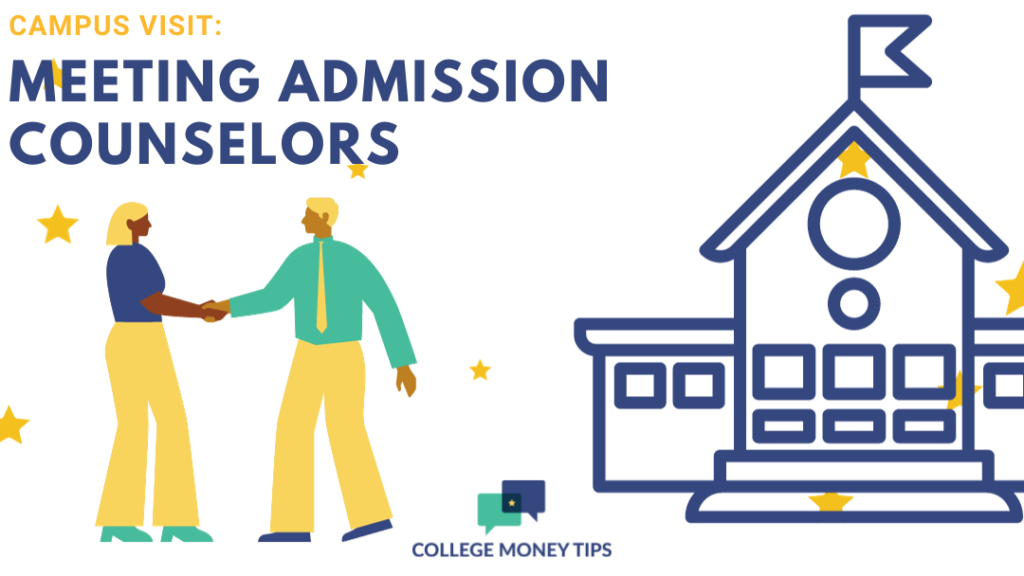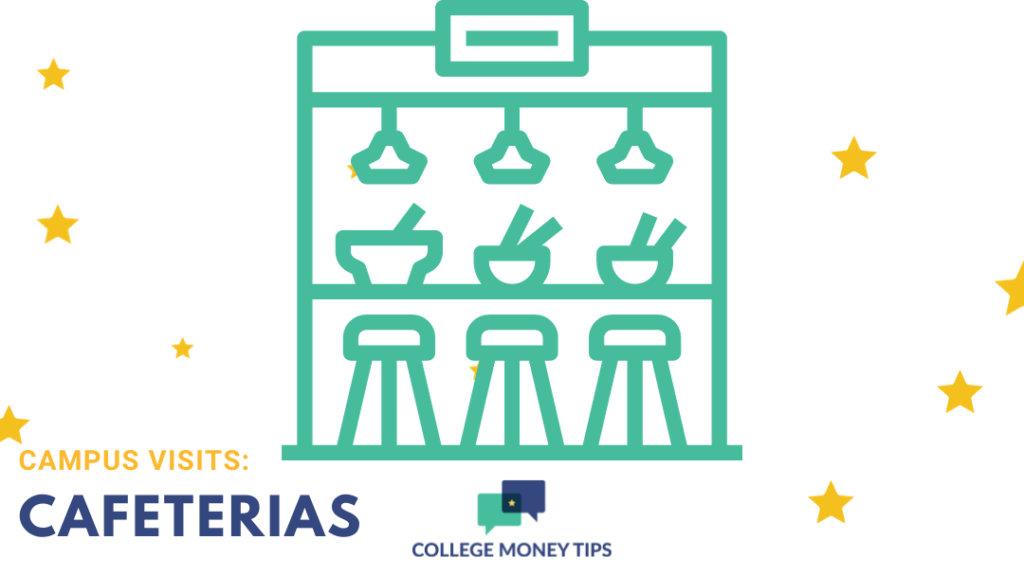As a parent, college visits can seem like the most complex undertaking in your child’s high school experience to date. What schools should you visit? What questions should you ask? What do you make of all those dollar signs on the financial aid guide? (Oh yeah, that’s a biggie.)
College visits vary so much, and that’s the cool thing about each. You can get a real sense of what a particular college or university “feels like,” which is pretty intangible. Even so, it can make or break the college tour experience.
We’ll shed light on all this while focusing on effective planning, what to do on campus tours, the questions to ask, what school to tour next — everything. We’re going to go beyond the standard advice so you get the most comprehensive practical tips ever.
Contents
- Why Are College Visits Important?
- Types of College Visits
- What Happens During College Visits?
- Getting There
- Parking on Campus
- Finding the Admission Office
- Connecting with Admission Counselors or Representatives
- Going on a Campus Tour
- Student Lounge Areas
- Cafeterias
- Residence Halls
- Athletic Facilities
- Administrative Buildings
- Academic Buildings
- Libraries
- Auditoriums and Performing Arts Spaces
- Experiencing the Academic Side
- Meeting with Others on Campus
- Other Factors to Consider During College Visits
- Student-to-Faculty Ratio
- Extracurricular Opportunities
- Campus Diversity
- Support Services
- Career Services
- Making the Most of Your Campus Visits
- Engage with Current Students
- Explore Surrounding Areas
- Document Your Impressions
- Does Visiting a College Help You Get In?
- Make Your College Visits Exceptional
Why Are College Visits Important?
I spent 12 years working in college admission, and I can tell you the most important reason to visit colleges: It gives you and your child (both of you — that’s important!) a chance to understand the campus culture. Getting physically on campus allows you to immerse yourself in the community so you can:
- Learn about student life.
- “Feel” the atmosphere.
- Gain authentic insights into the community.
Imagine visiting a college on a Friday and watching everyone pack up to go home for the weekend — that sure tells you a lot about a campus, huh? Or, what if you and your student notice a palpable energy on campus preceding the weekend? That can tell you so much about student priorities.
Two totally different experiences can give you and your child an idea of what to expect, and the only way you can learn is to get your feet on campus. Even if you’ve gotten the glossy literature in the mail or noticed the gorgeous academic facilities online, it’s time to see if it all matches up.
You might be tempted to do virtual college tours and check that college off the list, but resist that impulse. There’s nothing like getting boots on campus to really understand what a campus looks like and feels like, which your child can’t get from gluing themselves to a computer screen.
Types of College Visits
Did you know that there are different types of college visits?
- Personal campus visits: Whether you visit a liberal arts college or a community college, personal campus visits offer the most individualized visit opportunity. Your student will most likely get to do everything they want to do while on campus because when you schedule it, you tailor it to your students’ interests.
- Group campus visits: Group campus visits, just like they sound, offer an opportunity for students to visit campus and be part of a group. While they don’t offer the personalization that a personal campus visit does, you might be able to score a few separate individual appointments at the end of the day.
- Academic visit days: If your child knows they want to major in a particular academic area, you can attend an academic visit day, giving your child general knowledge about academics. You’ll likely get to do a group tour.
- Athletic visit days: Some colleges offer athlete preview days, where athletes converge on campus and visit with other prospective athletes and coaches.
- Individual interest visit days: Music visit days, theater visit days, etc. — the list goes on. Colleges try to offer showcases of different programs to attract students to visit.
What Happens During College Visits?
Before you even set foot on campuses, you must schedule college visits — learn how to get an official visit to a college. I’ve detailed exactly how to do that in the linked post. There are two main ways to schedule visits — by calling the admission office or visiting the college online and clicking “schedule a visit” under the admission tab. There’s more to think about than simply filling out a form, so check out the post on how to plan college visits.
Once you schedule your college visit, the next logical steps include getting there, parking on campus, finding the admission office, and then getting your visit underway.
Getting ThereFirst, you have to get to campus. Make your travel arrangements in advance so you can be sure everything aligns. Check with area hotels about discounts for students visiting — some will offer those. Getting to colleges might be as simple as driving two hours from home, while others require a flight and rental car.
Sometimes, colleges will offer vouchers to reimburse travel. For example, as an admission employee, I was authorized to reimburse a portion of a visitor’s travel expenses, such as a plane ticket or gas receipts. You may also qualify for a free college visit if you’re a low-income household. Ask the admission office for more information.
Parking on Campus
Your scheduling information should contain information about parking on campus. Whether you receive information via snail mail, text or email (or all of these!), it should give you explicit instructions about where to park.
Colleges and universities notoriously have terrible, crowded parking, but the admission office should have spots ready for you. They might even put your name on a spot if they’re on their A-game! That was one of the most popular things our admission office did for families. Talk about rolling out the red carpet!
Learn more: Are College Tours Free?
Finding the Admission Office
You should receive a map in your confirmation materials., which may come via email, snail mail, text message and more.
Once you find the admission office, you should see a reception area or desk. Have your student check in right away — they should be expecting you. They may ask if you want coffee or water and direct you to the restrooms. They may invite you to sit in the office to wait for your first appointment, especially if you arrive early. Check out the comfy couches and take a look around!
As the admission office is the college’s front door, this is a great time to start evaluating the college. Ask yourself:
- Is the staff friendly and accommodating?
- Did someone greet you right away?
- If you had to wait, did other people greet you, stop, smile and sit down to chat?
- Did you meet your child’s admission counselor right away? (Remember that they may be on the road and unable to meet with you.)
- Did someone go over your child’s schedule with you immediately?
Sitting in the admission office can give you a sense of the place right off the bat — you’ve heard the expression that it’s hard to overcome a first impression and hold them to it.
Connecting with Admission Counselors or Representatives
Your child has an admission counselor at every single school. Here’s how it works: Admission offices divide the country into different areas, meaning that one counselor takes care of a territory. These professionals have “their” group of students that they usher through the admission process.
Ensure that you meet with an admission or admissions counselor at a college or university, even if you don’t meet with your child’s admissions counselor. Though we do so much online these days, it’s important to maintain face-to-face communication with your child’s admission counselor. It can even alleviate your child’s nervousness to see a familiar face, particularly if your child has already met this individual, such as at a college fair or high school.
Try to meet with an admission counselor individually during your visit. When you meet with admission counselors, you’ll learn about the application process, scholarship opportunities and information about your child’s chosen program. Getting to know this person can set you apart from other candidates — face it, an edge means everything in this competitive admission process!
A quick note on meeting with admission counselors: No question is dumb, and encourage your student to have questions in mind. Students often clam up because they don’t know what to ask. Admissions counselors don’t know everything, but they should find it out for you — that’s their job. They’re like shepherds, rounding up your questions and delivering results.
Read more: 202 Powerful Questions to Ask on a College Tour
Going on a Campus Tour
Folks, this is the shining, blazing star of the college visit experience. You get to walk around and see the campus with your own eyes. Watching students on campus tours is fun because you can see them light up when they see particular parts of the campus that speak to them.
How long are college tours? Campus tours usually last one hour from start to finish but can last up to 90 minutes. You can’t choose your tour guide, which is too bad because a bad tour guide can seal the fate of the college. Try to talk them through that beforehand because they might not click with the tour guide.
You may not start your visit with a campus tour — it depends on your schedule or the visit day schedule.
The campus visit coordinator will organize tours differently on different campuses but should hit these areas.
Student Lounge Areas
Checking out student lounge areas can give you a great idea of how students interact socially. Do they sit around, chatting and drinking coffee? How do they decompress after a long day of studying? Is it vibrant and inviting?
Hopefully, you’ll see:
- Comfortable seating options to provide a relaxed and informal atmosphere for students
- Tables and workspaces to study and collaborate on group projects
- Technology and equipment, such as TVs, gaming consoles and other entertainment
- Residence hall social spaces might contain board games, pool tables and other recreational activities.
- Bulletin boards or information centers where students can find announcements, event details and other important information
- Designated quiet zones or study corners for students who prefer a quieter atmosphere for focused studying or reading.
Finally, hopefully, these areas are easily accessible. Student lounge areas are usually centrally located on campus so students can stop between classes. Student lounge areas vary considerably from school to school, so they’re one possibly overlooked area to check out on college campuses.
Cafeterias
Where do students eat? What’s the food like? Eating in the main dining area can give you and your student a good sense of how students utilize the cafeterias and, most importantly, how the food tastes. For some students, the cafeteria is one of the most important parts of the college experience — at least at first, on college visits. If the food isn’t good, don’t be surprised if your student writes off that college!
Cafeterias should be an open book, with diverse food options (particularly for specific dietary needs and healthy options), various meal plan options (which allow students to access the cafeteria for a certain number of meals per week), a range of food and specialty stations, social spaces, themed events, sustainability initiatives, late-night dining options and coffee shops or snack bars.
Residence Halls
Finding a campus with the right residence hall, or dorm, is tricky. The options available often depend on the size and resources of the colleges you visit.
Traditional residence halls typically have multiple floors with rooms arranged in a hallway for communal living and communal bathrooms. You’ll often find common areas for socializing and studying. However, you can find residence halls peppered with dozens of different options.
- Suite-style halls: Community-style rooms connected by a shared common area and bathroom.
- Apartment-style halls: Individual apartments or suites with a kitchen, living area and private bathrooms, typically for upperclassmen.
- Special-interest housing: Sometimes called themed housing, you might see special-interest housing favor honors students, language immersion living, or wellness communities. This might appeal to your student if they have specific interests.
- First-year student halls: These cater to students to foster community and collaboration among students in their first year of college.
- Family housing: If your student needs accommodations because they have a family of their own, family housing could be a good fit. Look into these units, which might consist of apartments or townhouses.
Other housing types might be available, even quiet or substance-free halls for students who prefer a more low-key living environment, or coed residence halls, which means that all genders coexist, likely with separate common areas. Your child can tap into so many different options — it’s amazing!
Athletic Facilities
Your tour may or may not go through sports complexes, gyms and stadiums to emphasize the importance of physical fitness and recreational activities. If your child is an athlete, meeting with a coach may be an important part of their college visit, so you may not need an in-depth tour of this space, because the coach will take care of that.
Administrative Buildings
A tour guide may walk you through offices for admissions, financial aid (to learn about the FAFSA) and other administrative services to help students understand the support available to them, including academic support services.
You likely won’t spend much time in these areas because hitting the most relevant day-to-day spaces is important: academic buildings, residence halls, common areas and cafeterias. However, some campuses have unique or historic buildings that symbolize the institution.
Academic Buildings
Tour guides should show you several academic buildings, such as classrooms, laboratories, research centers and specialized facilities, to highlight the institution’s commitment to developing successful graduates.
They may also show you buildings that house computer labs, innovation centers, or technology-focused facilities to showcase a campus’s technological resources.
Academic facilities can give you a sense of what it’s like to attend classes at that college. If you can, consider setting aside some time to visit with a faculty member or sitting in on a class. Watching how the professors or teaching assistants interact with the students can give you a great idea of the experience you’ll get as a student.
You can ask questions about the facilities, learn whether the technology is up to date, learn about the accessibility of faculty members, office hours, and any restrictions on faculty access or building access. You want your child’s best possible academic environment, and you can only find out by checking it out.
Some students think these are the most important buildings on a tour, and I half agree. You and your student must ensure you’re choosing the best educational atmosphere possible. However, remember that you can’t make friends with a building or spend time socializing with an academic program — remember the social aspect of campus life.
Evaluate the condition and accessibility of academic buildings. Are the facilities well-maintained, and do they meet your standards? Consider how easily you can navigate the campus and access the needed resources.
Visit specialized facilities related to your field of study, such as labs, studios or performance spaces. Pay attention to the condition of classrooms and lecture halls, noting factors like technology integration, seating arrangements and overall comfort.
Libraries
The campus tour should always feature at least one library. If it doesn’t, seriously question the integrity of the university. Even if your child doesn’t think they’ll use the library, they will! Look for shelves lined with a diverse tapestry of books and resources, the soft glow of study lamps and students huddling in cozy nooks or at communal tables, tapping away at laptops.
The library should be calm, with a subtle rustle of turning pages and the faint hum of intellectual curiosity, creating a serene sanctuary for individual and collaborative learning.
Auditoriums and Performing Arts SpacesAuditoriums and performing arts spaces may not appeal to all students (can you hear your student now?: “I’m not in the band or choir. Why do we have to look at this?”). Remember that all students will likely go to events on campus, and they may go here to watch.
The tour guide may also include beautiful spaces like parks, gardens, or other outdoor areas to show off the campus’s natural beauty and recreational spaces.
A few tips:
- Wear comfortable walking shoes! You will not want to wear high heels — you will walk on campus for an hour, sometimes over craggy sidewalks and up flights of stairs. Check your kids’ shoes, too.
- Consider the weather. Bring a coat if it’s going to rain or be cold. Sometimes, students would show up in sweatshirts for their 20-degree-weather tour. Our campus visit coordinator often scrambled to find coats for these silly kids.
- Check your physical fitness. Some family members struggle to keep up with the pace of a college kid on a tour. If you’re not sure you can make it, send your child on the tour on their own and view the campus on your own at a leisurely pace.
- Walk near the front of the tour group. Campus tour groups may be huge, so park yourself near the front of the group so you can hear everything. The people in the back miss a lot.
- Be prepared to stop a lot. Whether to ensure lagging people catch up or to stop to hear about a particular campus feature, you’re going to stop on the tour.
- Don’t forget to go to the bathroom before your tour. Most student tour guides have a prescribed hour to fit in the whole tour, and making everyone else wait could mean the student might be late for class.
- Ask questions. Everywhere you go!
- Ask if you can go into buildings not on the tour. If you see a building and your tour guide does not plan to go in, ask if you can. They might say yes or suggest you swing back at the end of the tour or later during your visit.
- Ask for a smaller tour group if yours is large: It’s worth trying to get a small tour if you can see a huge group of people forming to leave for a tour. Consider sidling up to the desk and asking discreetly for a smaller tour. It’s not always possible, but could be worth it to get a more personalized experience.
Experiencing the Academic Side
Besides touring academic buildings on campus, your student may also elect to meet with a professor. I highly recommend meeting with professors face-to-face to understand how professors work and interact with students.
Are they serious? Jokey? Care about their students? Naturally, some of that varies from professor to professor, but should be ingrained in the college’s aims and goals. Ask about the accessibility of professors outside of class. Are they available for one-on-one meetings, and do they actively engage with students in academic and extracurricular settings?
Understanding the level of interaction your child can have with faculty members is crucial for a well-rounded educational experience.
If meeting with a professor gives your kid the heebie-jeebies, sitting in on a class can help alleviate some of that pressure. Your child will get a feel for the class while you duck out and order your favorite coffee from the student cafe.
Your student will hopefully feel immediately at ease in that professor’s classroom. Some professors even involve the student in the lesson! Fun (and a little scary)!
If you visit during a group visit day, you may only be able to hear an academic presentation by a professor or admission counselor. If that’s the case, that will give you a great rundown of the academic major your child is interested in, and as an added benefit, you may also hear questions others ask about the program or major that you hadn’t thought to ask.
Meeting with Others on Campus
Finally, who else can you think of to meet while on campus? All of this will be prescheduled before you get to campus, but you may also consider meeting with:
- Academic support individuals, particularly if your student has dyslexia or other learning differences.
- Coaches, if your child knows they want to play a sport in college.
- Financial aid, particularly if you want to get an in-depth idea of what it will cost to attend the college or university.
Did you have a brainwave during your visit but didn’t make an appointment to meet with a particular group or individual on campus? Ask the admissions team or campus visit coordinator if you can squeeze it in later or make an appointment to talk with someone over the phone or Zoom in the coming weeks.
Other Factors to Consider During College Visits
There are a million other things to consider when you’re on campuses. However, we’ll bring a few to the forefront: student-to-faculty ratio, extracurricular activities, diversity and student support services. Let’s hatch these eggs.
Student-to-Faculty Ratio
Class size can significantly impact your learning experience. Smaller class sizes often allow for more personalized attention and meaningful interactions with professors. During your visit, inquire about the student-to-faculty ratio and how it might vary across different departments.
Extracurricular Opportunities
Beyond academics, a well-rounded college experience includes participation in extracurricular activities. Explore the clubs, sports teams and cultural organizations available on campus. Consider how these opportunities align with your child’s interests and passions.
If you’re lucky, maybe a club fair will be going on, or maybe your student can talk to someone about an organization. Inquire about the level of student involvement, leadership opportunities and the overall impact of extracurricular activities on the campus community. A vibrant extracurricular scene can enhance your child’s college experience and contribute to personal and professional growth.
Campus Diversity
Diversity enhances the learning environment by exposing students to a variety of perspectives. Take note of the student body’s demographic makeup and the college’s efforts to promote inclusivity. A diverse campus fosters a rich and dynamic community.
Speak with students from various backgrounds to gain insights into their experiences on campus. Additionally, inquire about the support services for underrepresented groups and the overall campus climate regarding diversity and inclusion. Remember, diversity means many things, including where people are from and their interests.
Support Services
College life can be demanding. Ask about counseling services, academic support and career guidance. If resources like this are readily available, your student may feel more secure as they navigate the academic journey. Learn about mental health resources available on campus to ensure a well-rounded support system throughout your child’s college experience.
Career Services
Ask about internship and job placement and the percentages. Alarm bells should ring if you hear “30 percent of our students found jobs after graduation last year.” That’s low. Ask about time management and study skill seminars offered by academic support services.
Making the Most of Your Campus VisitsFinally, let’s put the chocolate syrup on the ice cream on your campus tour. These tips will put the finishing touches on your visits.
Engage with Current Students
Current students are the MIPs — the most insightful people — during college visits. They can offer candid information about daily life on campus, the rigor of academic programs and the overall student experience. Don’t hesitate to discuss with students you encounter during your tour, and consider arranging meetings with student ambassadors or participating in campus events.
Prepare a list of questions to ask current students. Inquire about their favorite aspects of the college, any challenges they’ve faced and how supportive the campus community is. Ask about opportunities for involvement in clubs, sports or other extracurricular activities. Current students’ perspectives can provide a realistic and nuanced view of what being a part of the college community is like.
Explore Surrounding Areas
A college education extends beyond the campus boundaries. Take time to explore the surrounding areas to gauge the off-campus lifestyle. Consider factors such as housing options, local amenities and job opportunities for internships or part-time work. A college’s location can significantly influence your overall experience, so ensure it aligns with your preferences.
Beyond the immediate vicinity, consider the broader city or town. Is it a thriving urban center with diverse cultural offerings or a quieter town with a strong sense of community? Assess whether the surrounding area complements your lifestyle and preferences.
Document Your Impressions
With multiple college visits, details can start to blur. Create a system for documenting your impressions through a travel journal, photos, or a dedicated app. Include notes on the campus atmosphere, academic facilities and any standout features. Use our college visit checklist, the College Money Tips College Visit Spreadsheet, to document your impressions. You can copy and paste it onto your own Google spreadsheet.
Organize your documentation by college, making it easy to compare your experiences. Include positive and negative observations and any feelings or intuitions you had during the visit. This documentation will be a valuable reference when making your final decision, helping you recall the nuances of each campus and how well they align with your expectations. Don’t forget to do this right away because it’s easy to forget the details once you do several college visits!
Does Visiting a College Help You Get In?
Do college visits help admissions?
Visiting colleges doesn’t necessarily mean you’ll get in. You still have to meet the entrance requirements for the college or university. Your admission counselor will go over the requirements when you meet with them. If you don’t think you’ll meet the requirements, ask the admission office about what you can do to boost your chances of getting in. It may involve taking the ACT or SAT again or auditioning for an oboe solo — ask the admission office.
Make Your College Visits Exceptional
In the intricate process of choosing the right college, official campus visits stand out as a pivotal step. By immersing yourself in the environment, engaging with current students and carefully considering various factors, you can make the right decisions that align with your academic and personal goals. College visits go beyond the brochures and websites. They let you envision your future on campus and find the perfect home.
Also, remember that the weather can influence your perception of a campus. A beautiful, sunny day might cast the campus in a positive light, while a rainy or overcast day could impact the visit. Consider visiting multiple times, if possible, to experience the campus in different seasons and weather conditions.
Finally, consider visiting colleges when schools are in session because you can view the college when students are on campus. Visiting college during spring break or fall break requires a specific approach, possibly visiting again when students are on campus.
Learn more: How to End the College Search









